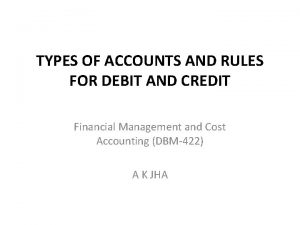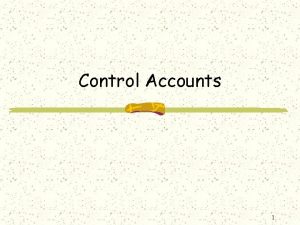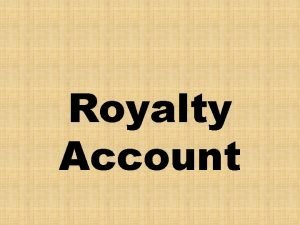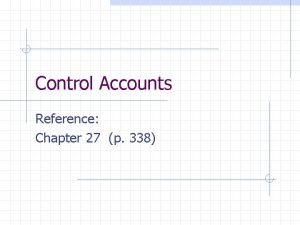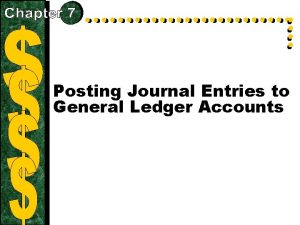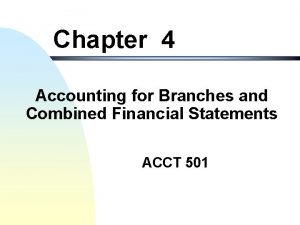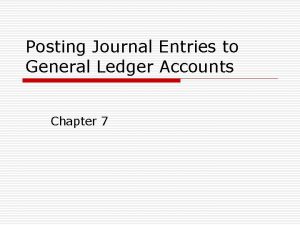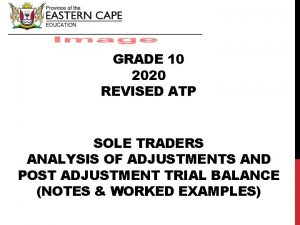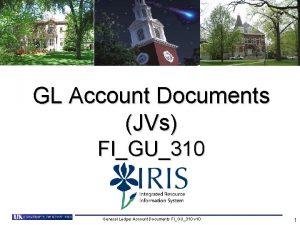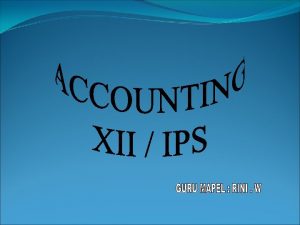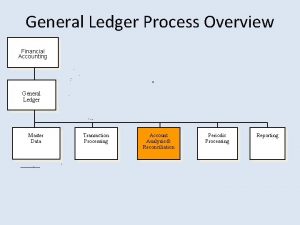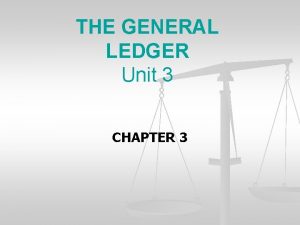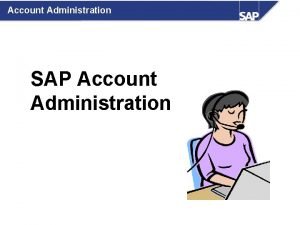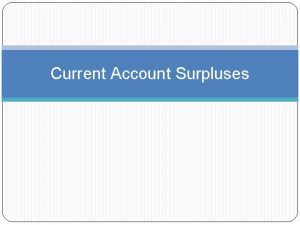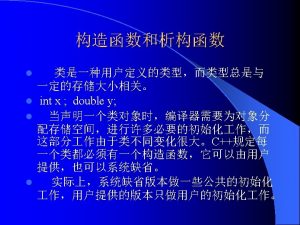General Ledger GL Account 1GENERAL LEDGER 2FINANCIAL STATEMENT














- Slides: 14

General Ledger (G/L) Account (1)GENERAL LEDGER (2)FINANCIAL STATEMENT PREPARED BY: CELESTE NG DATE: 14 SEPTEMBER, 2015

General Ledger總賬 �“A general ledger總賬is a complete record of financial transactions over the life of a company一個 企業的完整財務交易記錄在. �The ledger holds account information that: Is needed to prepare financial statements, and Includes accounts for assets, liabilities, owners' equity, revenues and expenses. ”

Source: http: //i. investopedia. com/dimages/graphics/general_ledger. jpg

Source: http: //www. cliffsnotes. co m/~/media/6 cb 0549 d 69 3 c 4 e 6 a 90 ce 1 cf 1 f 642297 e. ashx? la=en

Source: http: //www. exceltemp. com/wpcontent/uploads/2014/11/ledger-form. jpg

Source: http: //www. leoisaac. com/fin/images/general_ledger 3. gif

Source: http: //i 1 -win. softpedia-static. com/screenshots/BS 1 -General-Ledger_10. png

General Ledger總賬 �A general ledger contains all the accounts for recording transactions relating to a company's: Assets, liabilities, owners' equity, revenue, and expenses. �In modern accounting software or ERP, the general ledger works as a central repository for accounting data transferred from all subledgers or modules like accounts payable, accounts receivable, cash management, fixed assets, purchasing and projects. �The general ledger is the backbone of any accounting system which holds financial and non-financial data for an organization. The collection of all accounts is known as ledger account. This may be a large book. Source: https: //en. wikipedia. org/wiki/General_ledger

Financial statement (1) Source: http: //accounting-simplified. com/financial/statements/types. html � Financial Statements represent a formal record of the financial activities of an entity. These are written reports that quantify the financial strength, performance and liquidity of a company. � Financial Statements reflect the financial effects of business transactions and events on the entity. Four Types of Financial Statements � The four main types of financial statements are: (1) Statement of Financial Position- also known as the Balance Sheet, presents the financial position of an entity at a given date. It is comprised of the following three elements: � � � Assets: Something a business owns or controls (e. g. cash, inventory, plant and machinery, etc) Liabilities: Something a business owes to someone (e. g. creditors, bank loans, etc) Equity: What the business owes to its owners. This represents the amount of capital that remains in the business after its assets are used to pay off its outstanding liabilities. Equity therefore represents the difference between the assets and liabilities.

Financial statement (2) Source: http: //accounting-simplified. com/financial/statements/types. html �(2) Income Statement - also known as the Profit and Loss Statement, reports the company's financial performance in terms of net profit or loss over a specified period. Income Statement is composed of the following two elements: Income: What the business has earned over a period (e. g. sales revenue, dividend income, etc) Expense: The cost incurred by the business over a period (e. g. salaries and wages, depreciation, rental charges, etc) Net profit or loss is arrived by deducting expenses from income.

Financial statement (3) Source: http: //accounting-simplified. com/financial/statements/types. html �(3) Cash Flow Statement, presents the movement in cash and bank balances over a period. The movement in cash flows is classified into the following segments: Operating Activities: Represents the cash flow from primary activities of a business. Investing Activities: Represents cash flow from the purchase and sale of assets other than inventories (e. g. purchase of a factory plant) Financing Activities: Represents cash flow generated or spent on raising and repaying share capital and debt together with the payments of interest and dividends.

Financial statement (4) Source: http: //accounting-simplified. com/financial/statements/types. html �Statement of Changes in Equity, also known as the Statement of Retained Earnings, details the movement in owners' equity over a period. The movement in owners' equity is derived from the following components: Net Profit or loss during the period as reported in the income statement Share capital issued or repaid during the period Dividend payments Gains or losses recognized directly in equity (e. g. revaluation surpluses) Effects of a change in accounting policy or correction of accounting error.

Source: http: //www. agni. com/financial/Un. Audited%20 Financial%20 Statements%20 for%20 the%20 half%20 year%20 ended%2031 st%20 Dec. 2010. gif

Main point of reference
 Sales ledger control account reconciliation
Sales ledger control account reconciliation Vat control account double entry
Vat control account double entry Posting ledger accounts
Posting ledger accounts Debit
Debit Functions of control accounts
Functions of control accounts Analytical table of royalty account
Analytical table of royalty account Post ref accounting example
Post ref accounting example Sales ledger control account
Sales ledger control account Four column ledger example
Four column ledger example Allowance for overvaluation of branch inventory
Allowance for overvaluation of branch inventory Inventory grade 12 accounting
Inventory grade 12 accounting Problem 7-2 posting from the general journal to the ledger
Problem 7-2 posting from the general journal to the ledger General ledger accounting training
General ledger accounting training Cayenta mobile workforce management
Cayenta mobile workforce management Accounting atp
Accounting atp



